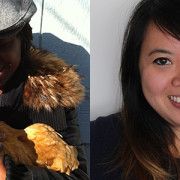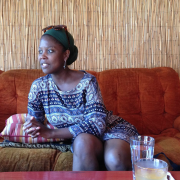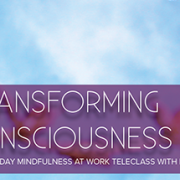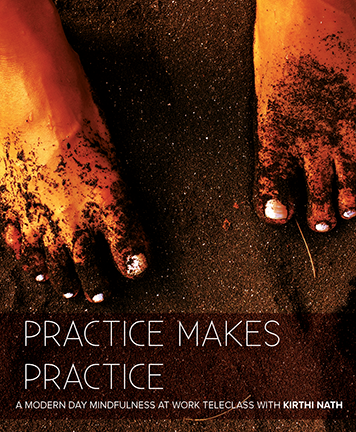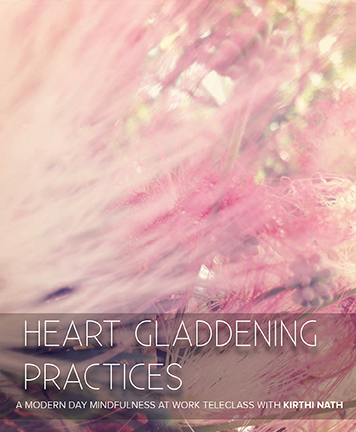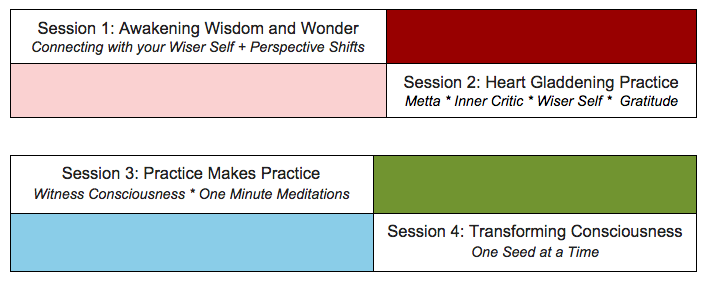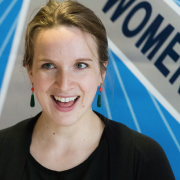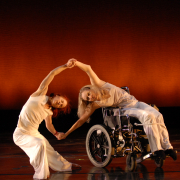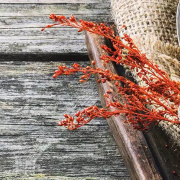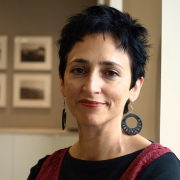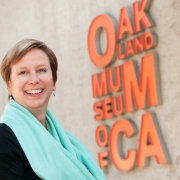Announcing the Ebony McKinney Arts Leadership Award
/0 Comments/in Ebony Award, MADE /by Rhiannon Evans MacfadyenCalling Heart-Based Movers and Shakers Behind the Scenes: Modern Day Mindfulness at Work Workshop
/0 Comments/in MADE, Public Programs /by katherincantonThe gift of a calling is that it asks you to listen deeply to awakening, to face your inner critic with humble curiosity and to trust a process that will ultimately allow you and your community to grow in ways you had not imagined possible. Exquisite!
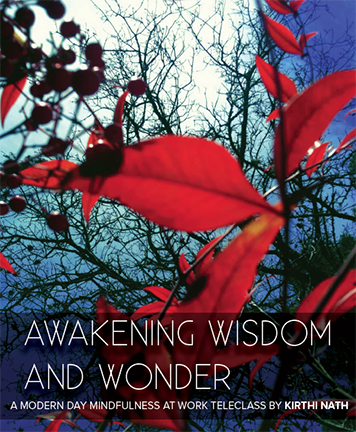 Listen, Love, Leap
Listen, Love, Leap
Modern Day Mindfulness at Work was first offered as a pilot workshop, sponsored in part through a EAP Made grant. It took the form of intimate “virtual tele-class” professional/personal development sessions, workshop style, created and led by me, Kirthi Nath. Modern Day Mindfulness at Work was created for heart-based movers and shakers interested in exploring spiritual mindfulness practices as a foundation for purpose-based livelihood and self-care. Core to the workshops were experiential meditation and creative presencing tools sourced from a variety of traditions — Buddhism, Tantra, Yoga. The workshops also included space for practice, reflection, and sharing. We met every Wednesday from 9-11 am via conference call for four weeks between January 14-February 4, 2015.
Despite my experience as a teacher, vision for the workshop, and background with the topic, I had doubts. Are there other heart-based movers and shakers who are spiritual and curious how these practices can support them professionally and personally? Is it ok to say the word “spiritual”? Would people have enough attention and bandwidth to be present for a workshop mid-week, first thing in the morning? Are the meditations I want to share too wild or too fill in the blank? Sometimes they can veer towards epic sensory spiritual adventures, other times they stay focused in breath, and I wondered how they would be received. Clearly, my inner critic had plenty to say. Instead of trying to push this away, I listened. My wiser self also had a vision — one that wanted to talk candidly about leading from love, intention and values, one that wanted to co-create opportunities to play and invite in magic, one that wanted to sign weekly emails with the salutation ‘love’. Instead of trying to push this away, I listened. To all voices. The dance with inner critic and wiser self: listening, letting go and letting be…LISTEN, LEAP, LOVE.
Creating Quiet in the Morning
Have you ever woken up and felt anxious? Do you check your gadget first thing? Have you noticed how even a simple email causes stress? If we take a breath, we can see and witness how the stress we feel is out of scale with reality. Yet we all feel the stress. I know I have.
We live in a world of digital connectivity and addiction to stress. Yet, we want calm. We want creativity. We want to thrive.
When I first proposed holding my workshop in the morning, I may have been shooting myself in the foot. So many of us wake up with these habits that stress us out. We feel we need to start working first thing. The truth about work is that we’re more productive when we are present.
I recently co-produced a film interview with Annette Richardson, senior advisor at the United Nations for Partnerships. All day she interacts with hundreds of people and makes high-level, life changing decisions. When exploring success and self-care practices, she shared her key to “success”. She has a morning ritual to give herself time to wake up, free of stimulation from outside voices, emails and external distractions. In the morning she takes space for herself, to be quiet, so she can be present and available throughout the day to listen, interact and make decisions that come from a grounded place.
It makes a huge difference to allow time for quiet in the morning, space for ourselves in the morning. For visionaries, this can be hard to do. It’s one thing to be told that this is good thing, that this will help you thrive. It’s another to experience and explore for yourself. I always say: don’t believe me, try it out for yourself. So we held the workshop in the morning, mid-week.
Morning was a good time for me! I did the workshop from home, with my morning tea. Mornings are easier for me. In the afternoon, something else often comes up to knock aside things like this. ~ Jessica
We began every session invoking the magic of rituals. Each call started with a mudra meditation. We combined a mudra (hand held gesture) and a mantra (words repeated during meditation) as a way to quiet the mind and come together as a community. Throughout the course, we explored various meditations and creative presence tools via a mixture of lecture, experiential meditation, reflection, soul inquiry and share.
From this workshop, I’m grateful for and still use the perspective shifts and ask myself often, what I am grateful for. The ‘creative presence tool’ and gratitude practice allows me to take a step back from my work and not become too frazzled with what is going on around me. ~ Dorothy
Practice Makes Practice
I applied for the EAP MADE grant because I appreciated EAP’s focus on regenerative practices and modeling of racially diverse leadership voices. I wanted to share this workshop because I have experienced first hand the gifts of spiritual practice in my work and personal life. I offered this specific wisdom workshop because I was frustrated with the dominance of whiteness in Westernized wisdom teachings and wanted to be part of the expansion of diverse voices. I thought it was important to invite more people of color to be part of the conversation — as leaders, co-creators and also part of the ever growing cultural library of resources referenced and passed on.
When I first met Michelle, my EAP Project Facilitator, she asked me, “How can this experience support you? We trust what you offer will be of benefit for the community, so let me know how we can support you”. I was taken aback, so I was honest. I asked for an extension for the workshop start date so I could go on spiritual retreats.
In October I went on a 7-day silent Metta retreat and in December I went to Hawaii for 7-days and swam, looking into the sky chanting metta phrases every day.
I share this because I almost didn’t.
I wanted to share so much in this course, it’s like a Michelangelo sculpture — you carve away what’s not needed. I almost didn’t include Metta in the workshop because I thought it was either too Buddhist or co-opting Buddhism, but an inner voice whispered, this gladdens your heart, you know the energy of this practice, share it and trust that they will know what to receive and what to let go, and you will pass this on honorably.
Since the workshop ended I’ve been practicing Metta every week ~ Jared
Metta and working with my inner critic and wiser self was exactly what I needed to steer my creative and freelance practice in a direction that was emotionally and intellectually sustainable. ~Dorothy
Oftentimes with callings we feel we’re not ready, that we need more preparation, we need more learning, more, more, more. But callings come to us when we’re ready to listen — and we grow with it. I’ll never forget the first day of our workshop – none of us knew each other yet we knew, we were exactly where we meant to be. Open.
Not an Island
Perhaps you can relate. To be great and valuable, the inner critic chimes in to say that you need to be able to do it all yourself. We all know and talk often about co-creation and collaboration. Are you still hirable if you ask for help? Can you thrive when you practice self-compassion and gratitude? The EAP MADE grant let me explore this. There was a part of the grant for me as visionary and a part for workshop delivery. Like you, I’m multi-talented and could’ve done it all myself. Instead, I listened to my heart which wanted to work with others, to co-create. So I humbled myself and hired Jason Wyman to design the workbooks. We worked very closely as I developed all the assets, and then I let go. What he created was beyond my imagination and just like I dreamed. And I paid him market rate. I mention money because it’s important we break the ceiling that’s real and self-perpetuated, and we honor ourselves and each other by paying each other well.
This was my leap. To allow help. To explore and experience more deeply what it’s like to co-create wonderful in community, and give myself the chance to focus on content creation, delivery and showing up.
Emerging Arts Professional and the MADE grant is rare. It gives grants to projects that are needed but not mainstream. It comes with real people who really care in your successes. If you have an idea or project that’s aligned with a MADE grant, I encourage you to apply. I almost didn’t, and look what blossomed when I took the leap!
The Modern Day Mindfulness at Work helped me cultivate a reflective practice in both my personal and professional lives. At work, it allowed me to take a step back and relax into situations that are often frustrating or anxiety producing. It also added a lovely respite in the middle of my busy week. It was something I looked forward to every week! ~ Jessica
Love, Kirthi
About the Facilitator:
Kirthi Nath is an award-winning filmmaker who believes that ordinary people ripple extraordinary change. Kirthi is the creative director and lead filmmaker at Cinemagical Media, a media production company that focus on creating films and workshops that support individuals, communities and companies to ‘be the cause that creates the effect’. In addition to filmmaking, Kirthi teaches (in person and online) courses and delivers talks that focus on Creative Presence, Spiritually, Mindfulness and the Practice of Good. In 2014 she was a Made Grantee and taught a 4-session online course about Modern Day Mindfulness at Work. Kirthi has practiced meditation, been on numerous silent retreats and immersed into informal and formal Buddhist and Yogi studies since 2001.
Curious how you can order the tele-class or just want to connect? ~ send me a note: kirthifilm(at)gmail(dot)com // www.cinemagicalmedia.com
Modern Day Mindfulness at Work was a workshop series supported by Emerging Arts Professionals’ MADE, a re-granting program that draws on the inspiration and power of the network to propose and execute projects that address immediate solutions of the day. Organizer and facilitator Kirthi Nath offered tools, meditation exercises, and practices in a weekly format. The workshop series aligned with EAP’s focus on regenerative practices, empowering a healthy sector. All of us thank Kirthi for her contribution to the network. Learn more about MADE here: http://www.emergingsf.org/made
Cultivating a Community with East Bay Center’s Jordan Simmons
/0 Comments/in Heart of It, MADE, Uncategorized /by Alex Randall Jordan Simmons is the Artistic Director of the East Bay Center for the Performing Arts in Richmond. Having grown up in Richmond and studied piano at the center when he was young, Jordan returned to teach there after earning a music degree from Reed College in Oregon. Jordan has been the artistic director and driving force of the center since 1985.
Jordan Simmons is the Artistic Director of the East Bay Center for the Performing Arts in Richmond. Having grown up in Richmond and studied piano at the center when he was young, Jordan returned to teach there after earning a music degree from Reed College in Oregon. Jordan has been the artistic director and driving force of the center since 1985.
The East Bay Center for the Performing Arts is a surprising place of discovery. Here our student artists— through the breadth, depth, and passion of experiencing classical master works and cutting-edge forms from around the world—come to know the world’s great performance traditions, the beauty of one’s neighbor, a calling in life, and the life of the mind, in addition to the spark of young imagination.
Through the active creation of original music, film, theater, and dance, coupled with self-determined community projects, we emphasize the cause of social justice, the hard work needed to prepare, the skills to create, and the courage to perform. We will soon open our completely restored building and with this new capacity, over the next 50 years, we plan to reach 75,000 more youth to carry on this work of discovery.
Jordan was interviewed by Jessie Dykstra, East Bay Fund for Artists Coordinator at The East Bay Community Foundation and a 2013-14 EAP Fellow.
JD: Let’s start with how you began your work with the Center and your transition to leadership.
JS: I was a student at East Bay Center when it first opened following the assassination of Dr. King. In 1978, after graduating from college, I came back to Richmond, and was hired as a faculty member by my former teacher – Richard Letts – who was at that time the Center’s general director.
During that period, the Comprehensive Employment Training Act (CETA) was alive, and there were a series of police brutality suits in Richmond that had a huge impact on the community. One of the first things that I understood at that time – as both a very personal and a larger life lesson – was that we don’t control everything. In other words, communities like ours were vulnerable to external forces as well as historical forces.
Between ’78 and ’85, I went back and forth between Richmond and Salvador, Bahia doing field work with Brazilian musicians, activists and their communities. I worked in a neighborhood that was struggling to assert self-identify and self-determine their cultural values during the end of military dictatorship, all in light of historical issues with systemic violence and racial oppression. It was during a period that some called an abertura, or “opening.” So it was very important for me to see and to be part of what was happening in Salvador. Race, culture, class, art – all of these elements were part of the dialogue there in both a distilled and intense way.
East Bay Center hit a particular financial crisis in 1984. Following the police brutality suits and the loss of income to the cities from Prop 13, our income dropped. We also moved to the historic downtown area (where we are now), but downtown was a ghost town that was off-limits territory after dark. Suddenly there were no more middle class students coming here. So the budget ultimately went down from $400,000 to about $120,000, and we had back-taxes owed to the Federal Government.
There was also a struggle in those days (early 1980’s) to define the boundaries of a “community art” program. Society was asking: Who gets to study art? Whose art should be studied? Who should be teaching it? These questions were mixed in with our questions about: What do you do with young people when there are distractions in a society that is becoming more complex? What do we need from traditional art forms? And then what is the generative dialogue with the community? Some of these questions belonged to the time and some of them – it seemed – belong to the ages.
Ultimately, we came to understand that what the community needed and wanted interacted dynamically with what the faculty and artists of the Center had as a vision. And that dialogue has remained at the heart of what is a community-based organization – a generative engine of a program demanding attention to dialogue with its community.
JD: So what came out of that period of generation for you?
JS: We understood that the community wanted multiple things. They wanted a place where their children could practice arts that reflected their family heritage, but also try forms that reflected other heritages. They wanted youth to be able to find their gifts, but they also wanted to be prepared for the highest levels of academia and professional life. They wanted to find pride in place. They wanted to know and tell the stories of their families, of this neighborhood, and the conflicts and injustices of society here in this city. They wanted to see work that had production value and artistic depth, and they wanted to make their own art.
That dialogue drove the program structure that arose, and in that sense it also drove the jobs that people like me had to learn to do.
I was brought up to know literature and dramatic forms, to study certain kinds of music, and write and teach those things. But I certainly wasn’t prepared for the day-to-day issues of… well, I don’t even call it leadership. It’s the responsibility that my colleagues asked me to take on.
It’s like being part of a group that’s getting ready to eat together – somebody has to wash dishes, somebody has to go shopping for groceries, somebody chops wood, carries water, that kind of thing. You need to be useful – moving from principles and values into program ideas, moving from program ideas to exploration of what resources you have, and determining what you have to work with.
I’m very lucky that I’ve been able to see the evolution of the Center several times in these decades as things happened. In 2002, the bottom fell out again, and we went from one budget size to almost half. This was after growing for 17 years, following our path, creating works, telling the story of Richmond, adding curricular structure, being involved in the school district and working with them to promote public education. All those things had been growing for 17 years, and so that was an eye-opening point, remembering that we don’t control every thing. Humility, I guess.
When you’re forced to cut your budget or reduce your scale, you’re not just exploring and developing, but you’re making a stance about what’s worth saving and focusing on the things that represent those years of struggling and research and dialogue. For us, that became the Young Artist Diploma Program and the mission of engaging of young peoples through the discipline and inspiration of global art forms. The idea was not necessarily focused on getting to a conservatory level, but that through our program youth were gaining a vision of themselves and their community.
JD: So in reflecting back, were there specific roles that you felt like you played, things that you were learning individually as a leader?
JS: With our kind of mission, it always seemed to me that in order to be a leader, you had to be mindful of listening to community dialogue and trying to support that dialogue. And sometimes that meant taking criticism or developing a new vocabulary or language. It also meant being clear about the values of the institution, which meant sometimes saying “no” to some people. You try to advocate for the small decisions that support the larger ideals. So in that sense, I have always been challenged to keep in mind that all of us individually have to be strong, but collectively we have to keep going back to that dialogue. And that has become part of the culture of the institution.
Personally, I have continued to develop myself as a performer and teacher. In order to be part of the community dialogue honestly, I had to give whatever time I could spare to my own practice and teaching, my own growth and understanding. And that of course is an endless thing, but it keeps one young!
I would say the privilege I’ve been allowed was to be a representative of this group. There are folks in this organization who are my elders, like older brothers and sisters, and I have been asked to represent us wherever in the world I have to go, whether to West Africa to organize a performance, or the mountains of Mexico to research curriculum, or New York to plan with supporters. I have had to learn about the world and then come back. So that has been for me a challenge – and a privilege– to go out, try to distill those forces, and then bring them back to work out together.
JD: What would you say are the parts of the job you wish you could do all the time and the parts of the job you wish you didn’t have to do?
JS: I came back to the Center in 1978 to be teacher. Being a teacher also means being a student. As a teacher one is always growing, and when I have time for a class or a project, that is something I am most happy about. Being with young people is endlessly inspirational and beautiful.
I really enjoy now seeing the 30-somethings, that mid-generation of alumni who are returning here as faculty and staff to take up layers of responsibility. I really like seeing that the culture here is growing and changing and becoming more mature. It doesn’t have to fight the same battles we had to fight. It has new struggles to overcome – new challenges. I am watching those colleagues develop themselves and contribute to this community and institution. It’s exciting to see that the younger generation is building, broadly and deeply sinking their roots, and they then have new ideas.
JD: I’m curious to know what you are seeing right now in the Bay Area arts community, how you are feeling about working as an arts professional and where you see the community going from here?
JS: I actually have little to say about that! Maybe twenty years ago I did, when I had more bouncy energy. But I don’t really think of myself as an “arts professional.” I am striving to be a better musician and maker of theatre; I am striving to be a better teacher and student. And I’m really striving for the Center to have ever more integrity in what it does, that we accompany our young people where they are, and that we don’t compromise our values or integrity of artistic training. Maybe if we work on that really hard here, we can be a good example to other organizations.
I think society struggles with the difference between art as commodity versus the opportunity for every kid and every person to experience art and to discover their gifts, to have the time and wherewithal to participate in art and not just take it in through passive media. And I know there aren’t that many places that do work in that realm that continues to be heard. But I have no magic wand or crystal ball.
JD: So, it’s more about what you’re doing now versus trying to anticipate what may come next?
JS: Yes, there are a lot of smart people who have time to anticipate and show the trends and all of that. I think no matter how that happens that we want young people to value this complex environment and be ready for those changes that are happening both in art and institutions, in art production, art appreciation, art funding, or whatever it may be.
I remember asking one of my teachers many years ago what he thought about certain theoretical questions regarding intonation and scale. He looked at me and smiled and said, “Do you want a nineteenth century answer, the twentieth century answer, or the answer that’s coming?” By that he meant that over the ages we’ve had certain theories about major and minor scales, chromatic scales, and pitch, rhythm, timbre – and tried to decide which were sophisticated. And so we can make theories about these things, but in reality we’re all trying to be more human in our institution and more attentive to young people’s growth and discovery. And, I think we have to concentrate on that.
JD: I’ll close with this question: For the students in your community or anyone else who might be considering work in the arts, do you have any words of wisdom you would give them?
JS: Fundamentals are always good. And following your own calling – finding out what is your gift or your love. What’s calling you to work hard? Then take time to make the effort, because that effort is rewarding. We all want to be good; nobody has to try to want to be good. So, then you have you have to pay attention to what is really feeding you, so that you can go back to your fundamentals and strengthen yourself as an artist.
Be open to change and to the struggle of the tough times as well as the good times. And enjoy them because ultimately your evolution is a response to both.
There’s a quote, “Does the path choose the walker, or does the walker choose the path?” I don’t know, but the point is that every day we have to wake up and ask.
Jessie Dykstra is the coordinator of the East Bay Fund for Artists at the East Bay Community Foundation. She is also responsible for managing the Foundation’s scholarship programs and supporting the grants administration process. Before joining the Foundation Jessie was an institutional fundraising consultant with Quinn Associates, an arts management consultancy serving small and mid-sized organizations in the Bay Area. She previously held positions in Development at The Wooden Floor and the California Institute of Integral Studies. Jessie is a candidate in the MBA program at the Lokey Graduate School of Business at Mills College.
Cultivating a Community with East Bay Center’s Jordan Simmons is part of the series The Heart of It: Stories from Leaders in the Bay Area Arts Community, an EAP MADE Project. Learn more about the series by visiting the MADE page in our website.
Delving into Dance with AXIS’s Judith Smith
/0 Comments/in Heart of It, MADE, Uncategorized /by Alex Randall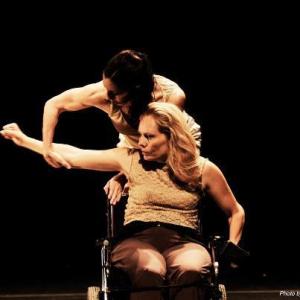 Judith Smith is the Artistic Director and Founding Member of AXIS Dance Company. Prior to becoming disabled in a car accident at age 17 in 1977, Judith was a champion equestrian. She transferred her passion for riding to dance after discovering contact improvisation in 1983. Under her direction AXIS has become one of the world’s most acclaimed ensembles of performers with and without disabilities. The repertory includes works by choreographers Bill T. Jones, Stephen Petronio, Yvonne Rainer, Joe Goode, Margaret Jenkins, Shinichi Iova-Koga, Victoria Marks, Ann Carlson, Remy Charlip, David Dorfman, Alex Ketley, Kate Weare and composers Meredith Monk, Joan Jeanrenaud, Fred Frith and Beth Custer and has received seven Isadora Duncan Dance Awards.
Judith Smith is the Artistic Director and Founding Member of AXIS Dance Company. Prior to becoming disabled in a car accident at age 17 in 1977, Judith was a champion equestrian. She transferred her passion for riding to dance after discovering contact improvisation in 1983. Under her direction AXIS has become one of the world’s most acclaimed ensembles of performers with and without disabilities. The repertory includes works by choreographers Bill T. Jones, Stephen Petronio, Yvonne Rainer, Joe Goode, Margaret Jenkins, Shinichi Iova-Koga, Victoria Marks, Ann Carlson, Remy Charlip, David Dorfman, Alex Ketley, Kate Weare and composers Meredith Monk, Joan Jeanrenaud, Fred Frith and Beth Custer and has received seven Isadora Duncan Dance Awards.
AXIS has toured throughout the nation, Europe and Russia and has been featured twice on FOX TV’s So You Think You Can Dance, bringing its genre of dance into literally millions of people’s living rooms. AXIS has been named a top 10 high-impact arts nonprofits in the Bay Area by Philanthropedia. The Company’s model education programs that offer a myriad of events for adults and youth of all abilities are highly regarded. AXIS is the primary organization that provides pre-professional training to aspiring dancers with disabilities. Judith was honored with an Isadora Duncan Dance Award for Sustained Achievement in 2014. In her spare time Judith is actively involved in thoroughbred racehorse rescue and carriage driving with her team of Percheron horses.
Judith was interviewed by Alex Randall, who currently works for BloomBoard, an education technology company, and was a 2013-14 EAP Fellow.
AR: What does being Artistic Director at AXIS encompass for you right now? What, what are your main responsibilities?
JS: Well, it’s changing. Up until this last year, I’ve been basically the Executive Director and the Artistic Director. So, my responsibilities have been fairly enormous and probably way too enormous. I now have a Managing Director who is as much or more responsible for some of the stuff that I was doing. At this point, I’ve been in this field of physically integrated contemporary dance for 27 years. I’ve seen the field grow and develop, and I would really like to be able to focus my energy on moving AXIS forward and moving the field forward and doing less of the everyday management.
Up until last year, almost everything was on me. I was the one responsible for developing the budgets, checking the books, and making sure things are getting entered right. Doing the HR, dealing with the visas, dealing with the contracts for consultants and finding the choreographers and dancers. It was mind-boggling, and now that I don’t have to do all of that, I kind of wonder how the hell I did all of that.
AR: Are there aspects of being an executive director that you’ve held onto because you really liked it?
JS: The things that I am focusing on are developing the artistic projects and grant language that goes around with those. And I definitely have to keep aware of the budget and finances, but it’s not on me to do it all. I don’t enjoy HR, and I don’t really enjoy that nitty-gritty management, so it’s nice to be able to let go of that. It’s nice to have someone else’s mind and voice and ideas on the development aspect and the communications aspect.
AR: Are there aspect of your work that serve as creative outlets similar to what performing has served for you in the past?
JS: Well, I actually love Excel spreadsheets, and I love developing budgets. I love getting really precise. I laugh because, this year, Karl and I only had four revisions of our operating budget, and usually, I have 14.
There can be a lot of creativity in how you budget, how you move money around, when you reforecast, and how you then again reallocate money. I also love the creativity of getting on the Internet and scouting for dancers and collaborators, finding out about somebody and figuring out where they really are.
AR: Do you feel like the shift you’re making right now is getting you closer to your dream job? Are you in it already?
JS: Well, definitely my dream job here, where I feel like I’m able to do things that I’m more effective at and not having to do things that I’m less effective at. My passion, from the time I had any concept of what anything was, was horses. So, if anybody ever asks me about my dream job, it would have been what I would have been doing had I not been disabled — showing jumping horses. You know, that’s just always there, but in terms of, you know, living my life as a disabled woman and a disabled lesbian, being in the arts and being in dance has been a great place to be.
I did get really burned out, to the point of fizzling over the last couple of years. Now, with this restructuring and the possibility of utilizing myself and my knowledge better, it’s resparked me and reinspired me, because there’s just so much that’s not done yet. And I still have a bucket list — we still have to get to ADF, there are a couple of choreographers that I still want to bring back, and there are a couple that we haven’t worked with yet.
AR: Are there people who have inspired you and kept you going along the way?
JS: Well, John Killacky has been a tremendous mentor to me. Victoria Marks, who is a choreographer, is just very smart. Sonya Delwaide — she was one of the first choreographers we commissioned, and she has done six or seven or eight pieces for us at this point, and she is also just really smart. KT Nelson — I bounce ideas off of her all of the time. Our bookkeeper, David Gluck, is somebody I rely on a lot. I think Bill T. Jones probably changed my life a little bit and really encouraged us to think about casting our net widely. This profession is so full of brilliant minds, really smart people who are really, really dedicated. It is nice to be a part of that.
AR: So, looking back, if you were to go back in time and give younger Judy, starting out with AXIS and realizing that you were going to be leading this organization, a piece or two of advice, what would they be?
JS: Run! Run! Run! Fast in the opposite direction. [laughs] Well, I will say that there were some mistakes I made starting out. I had really wanted this company to be co-directed. I did not make a great choice, and it took a few years to fix that problem because we didn’t have any of our organizational nuts and bolts. Like I said, we didn’t have an organizational chart. We didn’t have a job description. So, what I would tell that kid back then…I wish I had been able to be a little bit more direct and sterner when I needed to be and to find people sooner who could help me deal with problems.
I think you have to know a lot about this field, and that’s one thing that I did right. I wanted to know who the presenters were. I wanted to know who the funders were. I wanted to know who the patrons of the arts were. Where the venues were. Who the composers, choreographers, dancers, the people behind the scenes, lighting designers, stage managers were.
Just having a very, very broad scan of the field and knowing who’s out there and who you can go to. Go out and see everything you can, because that’s how you’re going to learn who’s out there. Read those programs.
Don’t be afraid to work hard. You know, it is kind of funny because, I do feel like I have accomplished a fair amount with AXIS, but it hasn’t been rocket science. It is not rocket science. It is a lot of fucking work, so just be prepared to know that you are going to be working 60, 70, and 80-hour weeks. If you are not able to do that, and if there is something else you can do that you will be happy doing, don’t do this. Just do this if you will shrivel up and die if you don’t.
The other thing is — be humble and gracious because you never know who’s going to be talking to whom. And be appreciative. Let people know you appreciate them and what they’ve done.
I wish I had reached out to people more who were doing this kind of work early on instead of looking at them as competition. I wish I had focused more on how we connect and help each other instead of feeling competitive. But, I’m sadly competitive and driven by nature. It’s something that I’ve really had to work on, which is why I love doing things like talking to you. I try to answer every email that comes in, even if I can’t help. I try to acknowledge it, you know? I don’t delete emails from random composer X from Serbia who wants to compose music for us.
AR: Is that a habit you started out with? Or is that something you developed over time?
JS: It’s definitely a habit I started out with. I started out when email was just starting, so not as many people were able to find you, but I really do try to be helpful when I can. I’m looking forward to having more time to do that because, over the past five years, I’ve had to say “no” to a lot of things that I wished I could do. This is the kind of stuff that I want to have more time for. I know a lot about physically integrated dance at this point, so it’s kind of dumb to sit with it in my head.
AR: That’s great! Well, I’m excited to hear what comes of that.
JS: Yeah, me too. We’ll see what happens.
##
Top Photo: Judith Smith and Janet Das in AXIS Dance Company’s Foregone choreographed by Kaye Weare. Photo by Andrea Basile.
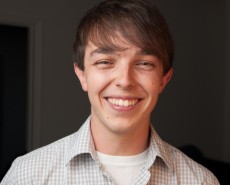 Alex Randall, Director of Operations at BloomBoard
Alex Randall, Director of Operations at BloomBoard
Alex aims to bring arts and business communities together to celebrate the artists in all of us. He’s lived a tech/art double life for the last nine years, starting at Harvey Mudd College in Claremont, CA, where he earned an engineering degree while dancing and acting on the side. Since graduating in 2010, Alex has worked for two education technology companies (one in Houston, on in SF), managing teams in business analysis, recruitment, account management, and customer service. In his evenings and weekends, he has performed with dance and theater companies, organized festivals (included the 2012 and 2013 Houston Fringe Festivals), covered dance for an arts publication, and volunteered with a number of art organizations (including Houston’s Business Volunteers for the Arts program and SF’s SAFEhouse for the Performing Arts). When he’s not busy with work or the performing arts, Alex enjoys creative writing and driving to the coast.
Delving into Dance with AXIS’s Judith Smith is part of the series The Heart of It: Stories from Leaders in the Bay Area Arts Community, an EAP MADE Project. Learn more about the series by visiting the MADE page in our website.
What’s for Dinner? Bringing Racial Equity to the Table: Served Up Some Realness
/0 Comments/in Equity, MADE, Public Programs /by esoppraniYou’ve been at that great feast. The one where the food is tasty and the conversation has got good flavor too. You take a bite while listening intently to the fellow across the table. They sip some of wine while you give your two cents on the state of affairs. Well we had a bit of that going on at What’s for Dinner? Bringing Racial Equity to the Table for Emerging Arts Administrators, an EAP MADE project awardee. On October 18th artists and staff from several Bay Area organizations came together to talk about what structural racism looks like in their field, at work, and in their lives, and what to do about it. It was a juicy conversation indeed.
The structure and organization of the day helped to digest a rich amount of information and dialogue. [workshop participant]
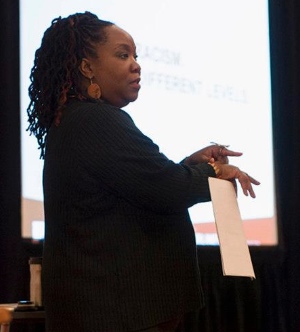 We began by establishing some clarity around language. What is white privilege? Internalized oppression? Institutional and structural racism? Are diversity, inclusion, and equity the same? Why does it matter? Popular narratives around success and failure in the United States are so divorced from a structural analysis that it inevitably serves to reinforce racism, and even other forms of oppression. And yes, we also talked about the role that art plays (intentionally or not) in that process, and how that process influences the making of art. And finally, we explored what that means for artists and arts organizations to be a major source of that narrative, of storytelling in our society.
We began by establishing some clarity around language. What is white privilege? Internalized oppression? Institutional and structural racism? Are diversity, inclusion, and equity the same? Why does it matter? Popular narratives around success and failure in the United States are so divorced from a structural analysis that it inevitably serves to reinforce racism, and even other forms of oppression. And yes, we also talked about the role that art plays (intentionally or not) in that process, and how that process influences the making of art. And finally, we explored what that means for artists and arts organizations to be a major source of that narrative, of storytelling in our society.
We need a space to practice our own story telling. [workshop participant]
One of the earliest ways that we try to make sense of the world is to try to understand the stories that are told to us. As a result, we have millions of conditioned responses swimming around in our head. This is good, and that bad. Watch out for this one. Embrace that. Hold this one at an arm’s distance. We are constantly juggling them, trying to keep them in check. What do we do with all of those stories? What do they do to us? From here we investigated the influence of implicit bias and resolved that there is interconnectivity among the art, society and the artists. Storytelling for the artist is deeply personal, and the response to that art is both personal (including privilege, bias, etc.) and structural (swimming in the context of history, culture, etc.) The mere existence of our art is not just a comment on the art itself, but also the structure in which it exists.
This training was very informative and provided some great tools on how to approach racial equity professionally and in my everyday life. It was great to be in a room of arts professionals looking for the same answers, especially when discussing intersectionality. [workshop participant]
So we dug deeper and unpacked our various identities in the context of privilege and marginalization. We even asked the scary question, “How does identity exist within your organization or the arts community?” Then we went even further and explored how we could leverage our areas of privilege for the greater good by making very direct, conscious choices around issues of race.
And we did it all while making some amazing Play Doh art! So yes. You missed a great dinner conversation. So don’t miss out the next time we decide to serve up some realness around race and the arts.
– Tammy Johnson
A word from Organizers Cristal Fiel and Tyese Wortham
In our ten years of experience as arts administrators, we have come across the issue of racial equity time and again. However, we didn’t know how to speak about racial equity and the arts so that colleagues and leadership would be able to listen and hear us until going through Tammy Johnson’s Step-Together-Step curriculum.
In response to our desire to push the conversation of cultural equity forward, we applied for Emerging Arts Professionals’ (EAP) MADE program and were awarded the opportunity to bring in art and racial equity trainer Tammy Johnson to the EAP network. Our goal for “What’s for Dinner: Bringing Racial Equity to the Table for Emerging Arts Professionals” was to provide a safe space for emerging arts administrators, artists, and allies to learn how to tackle issues around cultural equity that might arise in workshop participants’ respective cultural institutions.
As arts administrators of color, it is important to us that we approach our work with a lens of cultural equity. Our previous trainings with Tammy’s Step-Together-Step curriculum have informed us with a language around race and racism and have empowered us to feel more comfortable with talking about the “elephant in the room.”
We all come from different places, but we hope that the Emerging Arts Professional’s continued dedication to this issue would allow the network to find common ground to advance a culture that calls for a more equitable society.
– Cristal and Tyese
About the facilitator:
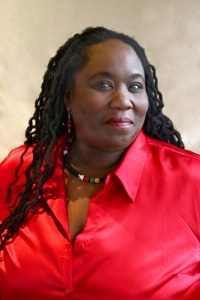 Tammy Johnson is a dancer, writer, and equity consultant. After directing electoral campaigns in Milwaukee, Johnson spent a decade advancing racial equity as a trainer, writer, and public speaker at Race Forward. Having gained recognition for her knowledge of equitable public policy practices at Race Forward, she co-produced Race and Economic Recovery with LinKtv and Race Forward’s Wordvideo blog series. Johnson is co-director of the award winning bellydance duo Raks Africa. Tammy lives in Oakland,California and can be reached at tmjabundance.com
Tammy Johnson is a dancer, writer, and equity consultant. After directing electoral campaigns in Milwaukee, Johnson spent a decade advancing racial equity as a trainer, writer, and public speaker at Race Forward. Having gained recognition for her knowledge of equitable public policy practices at Race Forward, she co-produced Race and Economic Recovery with LinKtv and Race Forward’s Wordvideo blog series. Johnson is co-director of the award winning bellydance duo Raks Africa. Tammy lives in Oakland,California and can be reached at tmjabundance.com
About the organizers:
Cristal Fiel holds a bachelor degree in Sociology and Ethnic Studies from the University of California, Berkeley. As Editor in Chief of the literary and arts organization, Maganda Magazine, she discovered her calling to work in the arts field. She has served as administrative coordinator and board member of the Asian American Women Artists Association, and has volunteered with a number of Bay Area organizations, including the San Francisco Film Society. Fiel is currently a program associate at the San Francisco Arts Commission.
Tyese Wortham is a grantmaker and administrator in the arts, teaching artist, and dancer with a commitment to advancing cultural equity in San Francisco Bay Area’s arts landscape by serving under-represented and under-resourced communities. She has been recognized for her expertise in cultural arts as a panelist, consultant, facilitator, and committee member for various Bay Area arts organizations, including the Isadora Duncan Dance Awards. Tyese served as a fellow in the first cohort of the EAP Fellowship Program.
What’s for Dinner?” was a workshop supported by Emerging Arts Professionals’ MADE, a re-granting program at draws on the inspiration and power of the network to propose and execute projects that address immediate solutions of the day. Cultural Equity is one of the four primary Areas of Study for EAP, and we are deeply thankful to Tammy Johnson, Tyese Wortham, and Cristal Fiel for providing this workshop to all of us. Learn more about MADE here: http://www.emergingsf.
A Glance at Grantmaking with Helicon’s Marcy Hinand
/0 Comments/in Heart of It, MADE /by Alex Randall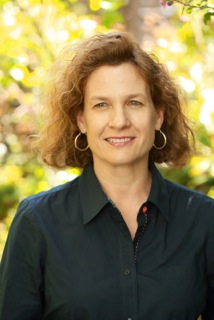 Marcelle Hinand is a management consultant with over 25 years of experience working with nonprofit cultural organizations and foundations on strategy, program development and assessment. Prior to joining Helicon, Marcy was program director for the arts at the James Irvine Foundation. There she commissioned groundbreaking research on cultural engagement and initiated innovative programs to boost cultural participation. Prior to that, Marcy worked with the TCC Group, where she developed and managed the Knight Foundation’s Community Partners in the Arts Access Program, among other large-scale projects. Marcy managed the Ford Foundation’s $40 million New Directions/New Donors for the Arts program, and held positions at the Nonprofit Finance Fund, the Lila Wallace-Reader’s Digest Fund and the National Endowment for the Arts. She holds a B.A. from Skidmore College and an M.F.A. from Brown University. Her current projects include consulting on fundraising strategy and advancement for the Community Arts Stabilization Trust (CAST), working with Yerba Buena Center for the arts on their strategic framework, and managing capacity building assessment and cohort activities for the Kenneth Rainin Foundation Impact Grant Program. To learn more about Marcy or to learn about Helicon Collaborative visit them at heliconcollab.net
Marcelle Hinand is a management consultant with over 25 years of experience working with nonprofit cultural organizations and foundations on strategy, program development and assessment. Prior to joining Helicon, Marcy was program director for the arts at the James Irvine Foundation. There she commissioned groundbreaking research on cultural engagement and initiated innovative programs to boost cultural participation. Prior to that, Marcy worked with the TCC Group, where she developed and managed the Knight Foundation’s Community Partners in the Arts Access Program, among other large-scale projects. Marcy managed the Ford Foundation’s $40 million New Directions/New Donors for the Arts program, and held positions at the Nonprofit Finance Fund, the Lila Wallace-Reader’s Digest Fund and the National Endowment for the Arts. She holds a B.A. from Skidmore College and an M.F.A. from Brown University. Her current projects include consulting on fundraising strategy and advancement for the Community Arts Stabilization Trust (CAST), working with Yerba Buena Center for the arts on their strategic framework, and managing capacity building assessment and cohort activities for the Kenneth Rainin Foundation Impact Grant Program. To learn more about Marcy or to learn about Helicon Collaborative visit them at heliconcollab.net
Marcy was interviewed by Leah Reisman, who is currently pursuing a PhD in sociology at Princeton and was a 2013-14 EAP Fellow.
LR: What pieces of advice would you want to give to someone who might want to follow a career path similar to yours?
MH: I did not intend to follow a career path to be a grant-maker, and I actually think that going into philanthropy and arts grantmaking is a very difficult path because there are very few spots in the grantmaking world. So I think aspiring to that is being aware of the fact that it’s a relatively small sandbox and being open to the different permutations of being an arts grant-maker, which can include working for a funder, being an intermediary, being a consultant or having other relationships with philanthropy and foundations.
The one piece of advice that I always give young people who say that they want to go into philanthropy is to think about the public sector—that is the way that I started.
In my day, there was a fellowship at the National Endowment for the Arts called the Arts Administration Fellows, and most of the people who are my peers who are in leadership positions in the arts across the country were Arts Administration Fellows. That’s a real testament to the NEA and their foresight that if they trained people like that, they would be leaders in the field. So I definitely think even though there isn’t a federal fellowship in the arts anymore that learning about grantmaking at the government level, whether it’s the San Francisco Art Commission, the California Arts Council, or even local public agencies, can give one at an entry-level, very solid grant-making experience that’s hugely attractive to private philanthropy.
LR: Right. And so a similar question—why do you think that you ended up where you are? You could speak to that professionally, personally, or somewhere in between.
MH: I went to graduate school and got an MFA in poetry, and the primary option when you graduate is to be an academic—it is very, very difficult to make a living as a poet. I knew that wasn’t the path for me. I had worked in several literary organizations and a community arts center in Cambridge, Massachusetts before graduate school, and I really liked that work. I took the grant-making path only because a fellowship opportunity opened up in front of me, and I thought if I learned about grantmaking I could find my way back into non-profit arts organizations. But the whole view that you get, the sort of macro perspective of grant-making, was extremely interesting to me, and so I never went back [to non-profit work].
I was opportunistic and I think people need to be opportunistic if they want to make a career in non-profits in general, and in the arts in particular. I have paid attention over the years to this whole concept of the transfer of wealth and the way in which the foundation sector is changing, and I’ve really thought about where I’m going to go next based on some of those economic and philanthropic trends, which I believe one has to be aware of.
Coming to San Francisco was partially a family decision, but it was also very calculated on my part. I saw there was a lot of wealth being developed in Silicon Valley and paid attention to the predictions that there was going to be a philanthropic wave for some time here, which I think we are seeing.
LR: Really interesting! Okay, I’m going to change the subject a little bit. How does work-life balance work for you?
MH: I have a great work-life balance because I work for myself. I own the company with my business partner, Holly Sidford, so I decide how much I work. I am very, very privileged to be in that position, but I’ve also have been doing this for thirty years, so that’s why I’m in this position. And I also have two children and am a single mom, so I need to have work-life balance. I have not found that to be the case when I worked inside institutions. I was the director of the arts program at the Irvine Foundation, and that was a less family-friendly position at the time that I was there. Although, again, I hope that women who are younger than me are paving that path because I think we are horribly behind the corporate sector in that way. Telecommuting, flex hours, different ways to design one’s work and the balance of the situation is the wave of the future, if not the present. In the more progressive industries, it is the norm. It is kind of ironic that we in the non-profit sector are undercompensated, under-recognized and can’t get work-life balance together.
LR: When do you get to be creative? And what is the definition of creativity you use?
MH: Well, I have two answers to that. My work is very creative because I design the way I run projects [and conduct] inquiry or interaction with organizations, and I plan with them and partner with them in what we want to accomplish and how to get there. That’s a lot of creativity, in my view. And, you know, being creative for me at this point in my life is primarily participating in creativity of others. I’m going to museums or performances or consuming culture in whatever ways I can. Literature is my field, so I read a lot of contemporary literature.
But my second answer is that I made a very critical decision in my life when I was at Brown, in graduate school, that I was not going to live the life of a creative person. That I was going to work in the sector, and facilitate the creativity of other artists, not that I was not going to try to live the life of an artist and an arts administrator at the same time. And I feel like it’s one of the most important decisions I’ve made in my life.
Many of my friends who I went to graduate school with or who are artists are constantly in conflict, warring between their work life and their creative life, and I made that decision for myself at some point and never looked back.
LR: And the last question—who or what inspires you?
MH: First and foremost, I’m inspired by artists on a regular basis. I’m thrilled that I can still go to a dance performance or go to the theater or read something and just be completely dazzled and moved to a different way of thinking or a different perspective on the world. And that happens to me daily. So, that to me is the reason for everything I do, to make that available to other people. Otherwise, I’m very inspired by a lot of the women who are in the generation above me, who work in this field, in philanthropy and the arts and arts administration here and in other parts of the country. I feel like I always have those people to look up to. And many of them are the forerunners—because of my age, they were the first ones to be the heads of organizations and the presidents of foundations and things like that.
##
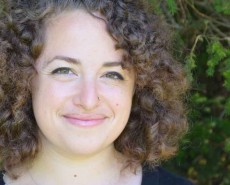 Leah Reisman, Graduate Student at Princeton University
Leah Reisman, Graduate Student at Princeton University
Leah is a graduate student in sociology at Princeton University, where she plans to focus on cultural organizations and cultural policy using an ethnographic perspective. Before beginning graduate school in 2014, she worked in a variety of museums, including the Research Group at the Lawrence Hall of Science at UC Berkeley, the Field Museum in Chicago and San Francisco’s de Young Museum. Leah has also conducted independent research at a science museum in Chicago and an art museum in Oaxaca, Mexico. She has a background in anthropology, and her interests include museum management, cultural policy, philanthropy, evaluation, and qualitative research methods. She enjoys cooking, running, and speaking Spanish!
Leah is EAP Fellowship Alumni 2013-14
A Glance at Grantmaking with Helicon’s Marcy Hinand is part of the series The Heart of It: Stories from Leaders in the Bay Area Arts Community, an EAP MADE Project. Learn more about the series by visiting the MADE page in our website.
Philanthropic Pursuits: Insights from Irvine Foundation’s Josephine Ramirez
/0 Comments/in Heart of It, MADE /by esoppraniJosephine Ramirez was appointed Program Director at the James Irvine Foundation in January 2010, with overall responsibility for the Foundation’s Arts program. Before joining Irvine, Josephine was Vice President of Programming and Planning for the Music Center in Los Angeles, where she founded the programming department in 2003. Previously, she was a Program Officer at the Getty Foundation, managing funding in the areas of arts leadership development, Los Angeles cultural organizations, arts education research and arts policy. Also at the Getty, she was Research Associate at the Research Institute, creating and implementing a multi-year investigation of the connections between art making and civic participation. Earlier, Josephine worked as a Program Producer and Education Director at the Mark Taper Forum and was also an independent consultant to cultural organizations around the country. She was the Community Arts Coordinator for the King County Arts Commission in Seattle before moving to California in 1989. For the city of Los Angeles, she has served in several appointed posts, including Vice President of the Cultural Affairs Commission and Chair of the city’s Cultural Master Plan Advisory Committee. She is a former Loeb Fellow at Harvard University’s Graduate School of Design, an award that supported her research on informal, nonprofessional art making and its relationship to individual and community vitality. A graduate of the University of Texas at Austin, Josephine earned her Master of Fine Arts from the University of Washington.
Josephine was interviewed by Leah Reisman, who is currently pursuing a PhD in sociology at Princeton and was a 2013-14 EAP Fellow.
LR: What pieces of advice would you give to someone who wants to follow a career path similar to yours?
JR: Well, first, about working in philanthropy, I think that unless you’re in the financial situation to head your own family foundation or give away your own money, a career in that part of the nonprofit field may not be the best place to set your sights on in any exclusive way, at least at first. While it would be fine to work towards that as an eventual goal, jobs in philanthropy are not exactly plentiful so narrowing your scope to just that when you’re starting out might not be a workable strategy. I mean, if you fall into it, great, but it might lead to some pretty frustrating years if that is your only goal.
Perhaps a better way to approach your career is to answer questions like, what do you want to do or change in the world? What do you believe? What are the things that are worth working hard for? Where do you feel like you could make a difference? And it very well could be that your answers will lead you to work that would, sooner or later on, make you competitive for a job in philanthropy.
LR: Right. So focusing on philanthropy is a kind of overly narrow approach, especially given the state of employment and just the variety of opportunities out there.
JR: Yes, and in general that’s kind of an overall healthy life exercise: to practice being open to the wonderful curveballs that life can throw you.
LR: So that’s actually a perfect segue into this other question—why do you think that you are where you are now? What curveballs did life throw you?
JR: I am where I am partly because I have an opinion that I worked to shape through what I experienced in my earlier career.
In an overall sense, cultivating your voice is key. I tried, and continue to try, to be curious, with a critical eye, about what I thought, about what struck me as compelling and what didn’t about my work and about the work of others I observed.
In my own way, I think I was continually trying to pay attention to what seemed out of sync or sort of wrong-headed and to what resonated with me to from a sense of my own mission in my work. It can take a while to develop that because, sometimes, you’re just feeling lucky to be there and to have a job in a field you want to be in.
LR: Yeah, I think that’s great. So kind of developing a filter through which you’re navigating your way through experiences based on a gathered understanding of what is important to you, what resonates, and what doesn’t.
JR: Yes. It’s a combination of cultivating your voice and establishing your reputation. Also, I would say, one of the biggest assets that you can hone as you progress in your career is a really strong emotional and social intelligence. You can have all the right experience plus the pedigrees, but if you don’t know how to talk and relate to people, you’re not going to be competitive for the top jobs.
LR: That makes a lot of sense. So what has best prepared you for the challenges of your job?
JR: For this job [at the Irvine Foundation], I would say learning what I’ve learned so far about organizational cultures and the social intelligence piece. How does this place work? How do I learn to talk like them? That is a really important skill to have and to deepen.
LR: I think in this hyper-competitive universe it is really important to pay attention to those pieces, and they often, I think, get left by the wayside as we are scrambling to make ends meet. So I think it is important, and I’d love to hear just about some of the challenges that you receive in your current work, and how those kinds of skills have helped you cope with them.
JR: In general, the development of your professional network is very important. When you’re not exactly sure how to move forward on something, the ability to have a strong personal-professional network to call on and say, “Hey, you got 10 minutes? I need to talk to you about something that’s bugging me.” The ability to just sort of drop the facade that we know exactly what to do when we don’t, and say, “I’m really stumped by this one, and I’m not sure of the next best step.”
LR: So there’s humility to it—an ability to ask for help and to cultivate [relationships with those] who can provide those kind of complimentary and contrasting perspectives.
JR: It’s how we work in community—I’m there for you if I possibly can be, and I know that you will be for me. I have a set of people in my circle that I have known for 20 to 30 years from working in the field who know me well. We know that we’ve got similar values about why we’re doing the work. And I never underestimate the power of those relationships.
LR: Yes. I’ve been doing a lot of asking others for opinions as I’ve been growing up in this field. And one of the most gratifying things that has happened to me over the last couple years has been people starting to come back and ask me questions, [experiencing] those relationships and that kind of mutual respect that come from trusting someone and really valuing their opinion. Anything else that you would say has prepared you for the challenges of your job?
JR: An inquisitive mind, and a lot of improv training—that really serves one well.
LR: Yes! I’m at a very different level and a very different kind of position, but I’ve also found the kind of training and types of experiences you get in theater, and in improv especially, to be very valuable in cultivating social-emotional intelligence.
JR: Right! And for me obviously it wasn’t about becoming a professional artist.
The payoff, after hours and hours of improv training, is really more about being able, in any professional environment, to just—boom—stand up in front of people and do whatever it is you’re supposed to do, even when your natural inclination is not to stand up in front of people at all.
LR: Yeah, that resonates. That makes a lot of sense. So, a more practical question—how does work-life balance work for you?
JR: Balance is about making sure you’re in touch with: Who am I? What do I like to do? With respect to work stuff, where am I? And, what do I believe in? I’ve had all different kinds of balances. When I first moved to Los Angeles, I forced myself to join a softball team. I’m not a sports person, but it happened to be a very fun social outlet. I didn’t know anybody, I didn’t have a relationship or kids, so I was in a place where I could just immerse myself, learn the city, learn my job, and then all my socializing was either around work friends or my softball team. I would say it wasn’t a great work-life balance compared to other situations, but it worked for that time.
LR: One last question—who or what inspires you?
JR: This might be corny, but I have quotes around my computer screen that include stuff like: “A good argument = the compliment of rational opposition,” “Art allows us to find ourselves and lose ourselves at the same time,” “It’s impossible to advance the dialogue on any issue without having a critical stance,” “Genius often arises out of constraint,” “No problem can be solved from the same level of consciousness that created it.” And then, there is a fabulous German word, “entlistungsfreude,” that means the satisfaction one gets from crossing things off lists. Nerdy, I know.
I also have an image of Michael the Archangel, a piece of rock from the island that Nelson Mandela was imprisoned on, a small image of the Madonna and Child, a tiny figure of Ganesh — all to remind me of important stuff like justice, tenacity and faith.
LR: Yes! That’s awesome. I love that. So you have your talismans. You created a little environment that makes you feel positive and inspired in your work. Well, thanks so much for taking the time to talk with me!
##
 Leah Reisman, Graduate Student at Princeton University
Leah Reisman, Graduate Student at Princeton University
Leah is a graduate student in sociology at Princeton University, where she plans to focus on cultural organizations and cultural policy using an ethnographic perspective. Before beginning graduate school in 2014, she worked in a variety of museums, including the Research Group at the Lawrence Hall of Science at UC Berkeley, the Field Museum in Chicago and San Francisco’s de Young Museum. Leah has also conducted independent research at a science museum in Chicago and an art museum in Oaxaca, Mexico. She has a background in anthropology, and her interests include museum management, cultural policy, philanthropy, evaluation, and qualitative research methods. She enjoys cooking, running, and speaking Spanish!
Leah is EAP Fellowship Alumni 2013-14
Philanthropic Pursuits: Insights from Irvine Foundation’s Josephine Ramirez is part of the series The Heart of It: Stories from Leaders in the Bay Area Arts Community, an EAP MADE Project. Learn more about the series by visiting the MADE page in our website.
Executive Director Roadmap: Insights into OCMA’s Lori Fogarty
/0 Comments/in Heart of It, MADE /by Alex RandallExecutive Director, Lori Fogarty, is leading Oakland Museum of California (OMCA) in groundbreaking transformation of its’ art, history, and natural sciences collections. With more than twenty years of the museum experience Fogarty previously served as director of the Bay Area Discovery Museum in Sausalito, where she oversaw a successful $19.5 million capital campaign and expansion project. She also spent twelve years at SFMOMA in multiple positions including senior deputy director, deputy director of Curatorial Affairs, and associate director of development. Fogarty graduated summa cum laude and Phi Beta Kappa from Occidental College in Los Angeles in 1984. In addition to her professional background, she has served on the boards of Enterprise for High School Students, the Children’s Day School in San Francisco, and the Association of Children’s Museums. She is currently on the board of Head-Royce School.
Lori was interviewed by Jessie Dykstra, East Bay Fund for Artists Coordinator at The East Bay Community Foundation and a 2013-14 EAP Fellow.
JD: What experiences that happened along the way helped get you to where you are today?
LF: I definitely think some of it was luck. Every institution that I’ve joined – the Music Center, SFMOMA, Bay Area Discovery Museum, and then the Oakland Museum of California – was at a real moment of inflection, of change and growth. I first started at SFMOMA when it was in the old building on Van Ness Avenue. But we knew a new facility was on the horizon with a Capital Campaign in the near-term, and that institution grew and transformed so much during the period I was there. So I think I have had incredible good luck to be with institutions that were on a growth trajectory.
Early in my career, I also had really fantastic bosses and mentors that I learned so much from. And then I think you just have to do a really good job. You have to work really hard, you have to prove yourself, and you have to be a positive asset no matter where you are in the organization – I started out as an administrative assistant!
But within these institutional roles, I would put myself forward. I remember an important moment at SFMOMA when I was still in Development and we were starting a strategic planning process. I raised my hand and said I was happy to help coordinate it – above and beyond my job – and that really positioned me for a next step. You have to keep your eyes open for those opportunities, so that even within an institution – and certainly when opportunities come to take the next step with another organization – you are brave enough to go after those opportunities. So I would take some credit for hard work, but a lot of good fortune, too.
JD: What pieces of advice would you give someone who wanted to move to a director level one day?
LF: Again, I think you have to look for opportunities to play a leadership role, at any level. I’m a huge believer that there are people within the middle management level of every organization that really make a difference. And they usually, show a great attitude. I recently read about the idea of being “emotionally expensive”; there are people within organizations that are a real drain on the culture and morale – they’re high maintenance. It’s very rare that those people get into leadership because they’re not advancing the goals of the organization. So I think you have to show that you’re not just there for your own career or individual function, but demonstrate every day that you’re committed to the organization as a whole.
Honestly, as a former English major, I think communication skills are really critical. People who are good writers and present themselves well in a public setting – those fundamentals go a long way. Yes, graduate degrees and experience can be important, but I think “soft skills” around communication, demonstrating leadership, being a positive catalyst for morale and organizational culture – those are the things that, for the staff I supervise, make all the difference.
JD: Looking back at all of those building experiences, what do you think has prepared you best for the job you have now?
LF: The people I’ve worked with have prepared me well – both on the staff and board. This may sound silly, but I was writing a thank-you note this morning to someone who had opened their home for a donor event, and it made me remember back to early in my career at SFMOMA. The Director of the Museum went to great lengths to make personal touches; etiquette was really important to him. Those little details make a difference, especially in fundraising and relationship-building. That was a really important model to have at an early stage in my career, and there were many other people I was able to observe who really excelled in their positions.
I would say that being in a Director role involves such a diverse set of tasks, responsibilities and skills. For example, take financial and budgeting oversight. Early in my career I would have thought, “I don’t know how to do that – I was terrible in math! I was an English major!” But I do a lot of that now, and a lot of fundraising; personnel management is also a huge part of the job. I think you have to be very ready, knowing that it’s going to be all of that. There will some parts of the job that you’re comfortable with, and some parts that you’re not. So you have to work hard at the parts that are new and seek out experience and exposure where you may not have had it before.
I also look to colleagues at other institutions. I try to keep a strong network of other museum directors and have always remained very close to the organizations I’ve left. I continue to turn to colleagues that I haven’t worked with for 15 years and ask: Do you have a job description for this? Do you know anybody who would be good at that? I think you need to look very deliberately within your network for what you can learn.
JD: For those significant changes that have happened in the museum, how have you personally, in your leadership role, managed those very big changes?
LF: Well, there were hard moments! I think back to a few years ago when I read the book Game Change, which told the story of the 2008 presidential campaigns. Something that was a revelation to me was reading that one of the big advantages of the Obama campaign was that he had a really solid team that was on the same page, with shared goals and values. Within the Clinton campaign, there were huge egos and people with tons of experience, but a lot of in-fighting. So one of the things I’ve learned in going through these huge changes is that you do not do it alone. No director or leader can go through it single-handedly – the idea of “heroic leadership” is outdated. Instead you have to find really good people to work with who you trust– people who can be brave and make tough decisions with you. And through that, you really create a sense of team.
So one of the things I’ve learned in going through these huge changes is that you do not do it alone. No director or leader can go through it single-handedly – the idea of “heroic leadership” is outdated. Instead you have to find really good people to work with who you trust– people who can be brave and make tough decisions with you. And through that, you really create a sense of team.
When we were going through the gallery renovation, I brought in people who were very bold and helped me face what we needed to do. With the transition in our operations from the city, I hired a consultant to be my partner through the whole process, and also brought in the senior staff and said, “We’re doing this together, and I need everyone’s best thinking.” And that’s the leadership culture I’ve tried to build, in that the six members of the executive team aren’t only looking at their specific function and trying to be an advocate for their own department, but they are sharing in the leadership of the institution. They are accountable for doing what’s best for the museum as a whole. Sometimes the challenge for me is having the desire to make everybody feel good and make everything okay– kind of the “good mom” complex. But you can’t do that. You have to build leadership from all levels of the organization, as we were talking about earlier, and then create a team that really works as a team.
JD: Let’s close by talking about what you would like to leave as your legacy, whether with this institution or more generally. What would you consider to be “success” for yourself?
LF: I would start with two things. On the organizational level, I’d like to have left every organization I’ve worked for better for my having been there – to have taken OMCA to the next level. And if I can help the Oakland Museum to claim a truly vital, trusted role as a resource for this community, particularly the very local community, that would be what I would consider success.
For the field at large, I hope the Museum can serve as a model, that people could say that we are an example of a museum that truly is connected to its community. And I’d like to see us go much further on that path.
More personally, I try really hard to be a good mentor to people. I want the people I work with to feel valued and respected – that this is a good, healthy place to work. And for the people who are serious and really committed to growing in their careers, I hope I can be a help and inspiration for them, like many people have been for me in my career.
And in all of that, I hope I can stay sane and healthy myself! I have two kids, and when I thought about what has prepared me best for my role as a director, I thought of parenthood. There have been many lessons learned on the job – in both areas. And I think being a parent has provided some enforced balance for me. I could do this job 24 hours, 7 days a week – but I have to go home and be Mom. The year we were going through the transition with the city was also my son’s senior year of high school, and I remember leaving really challenging negotiations with the city and then going on a college visit. And it was really hard on one hand, but on the other hand it gave me perspective. So I also hope that my family will stay safe and sane through this journey, too.
##
Jessie Dykstra is the coordinator of the East Bay Fund for Artists at the East Bay Community Foundation. She is also responsible for managing the Foundation’s scholarship programs and supporting the grants administration process. Before joining the Foundation Jessie was an institutional fundraising consultant with Quinn Associates, an arts management consultancy serving small and mid-sized organizations in the Bay Area. She previously held positions in Development at The Wooden Floor and the California Institute of Integral Studies. Jessie is a candidate in the MBA program at the Lokey Graduate School of Business at Mills College.
Executive Director Roadmap: Insights into OCMA’s Lori Fogarty is part of the series The Heart of It: Stories from Leaders in the Bay Area Arts Community, an EAP MADE Project. Learn more about the series by visiting the MADE page in our website.
EAP SF/BA Mission
OFFICE HOURS
SAT & SUN: Closed
p. (415) 209-5872

